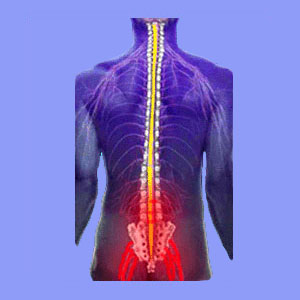
Hereditary sciatica can span generations due to the inheritance of genetic material from parent to offspring. Much of how we develop physically, mentally and psychoemotionally are related to genetics. Sciatica is just one of many health issues that can be passed along in the generational continuum.
Why is sciatica related to genetics? What genes are involved? Is there any way to prevent my children from suffering sciatica like I must endure? These are all common questions that we regularly receive on the subject.
This post details the relationship between sciatic nerve symptoms and the inherited genetic material that makes us develop as we do.
Hereditary Sciatica Defined
Heredity is defined as the inheritance we receive from our parents in the form of genetic material. All human genes have a long history and can be traced through generations. It is possible to benefit from the same excellent genes that served our ancestors thousands of years ago. However, it is also possible to have our health negatively affected by genes, as well.
Just to be absolutely clear, there is no singular “sciatica gene”. Sciatica is a condition that can have many different causes, as we write throughout this website. However, many of the typical causes of sciatica and pseudo-sciatica can be inherited genetically, which forms the basis of this essay.
Sciatica and Genetics
Many genetic traits can be passed along from parent to offspring. Some of the traits that can contribute to sciatica symptoms include all of the following issues and more:
Disc degeneration and tendency to herniate are certainly genetic factors that we see generation after generation. Genetic tendencies can include location and disposition towards structural change in the intervertebral tissues of the spine.
Bone density issues like osteopenia and osteoporosis can be passed down genetically.
Atypical spinal curvatures and conditions that might incite spinal curvatures can be linked to gene inheritance. Scoliosis tends to be inherited on the female side of the family.
Arthritis tends to affect people generation after generation in similar locations and severities. Arthritis also tends to transfer on the female side of the family more than the male.
Spondylolisthesis and the tendency to develop listhesis can have a genetic link.
Spinal abnormalities, such as transitional vertebra, hemi-vertebra and sacralized vertebra are often seen passed along generationally.
Mindbody issues are a major player in the development of sciatica. Remember that our psychoemotional makeup can be greatly influenced and even almost wholly formed by the inheritance of genetics from our parents and ancestors.
Hereditary Sciatica Prevention
Scientists are actively trying to isolate gene material that is suspected of causing or contributing to many health issues, including many problems that affect the spine, neurological system and overall anatomical development. There is the hope that through proactive gene therapy, problem genetic markers can be eliminated in children before they are born, allowing them to avoid the hereditary issues that plagued countless generations before.
Science is still far away from realizing the lofty goal of preventing many health issues through genetic modification. Besides the actual methods that need to be invented, perfected and utilized to perform this difficult objective, there are also ethical and religious objections that might further hinder progress.
It seems unlikely that humans will be incapable of preventing the passing of unwanted genetic material for some time. If we survive as a species long enough, it does seem probable that scientists will eventually be able to prevent many negative conditions through genetic manipulation of some sort. However, the reality of having this type of technology implemented universally will not be possible for the conceivable future.





